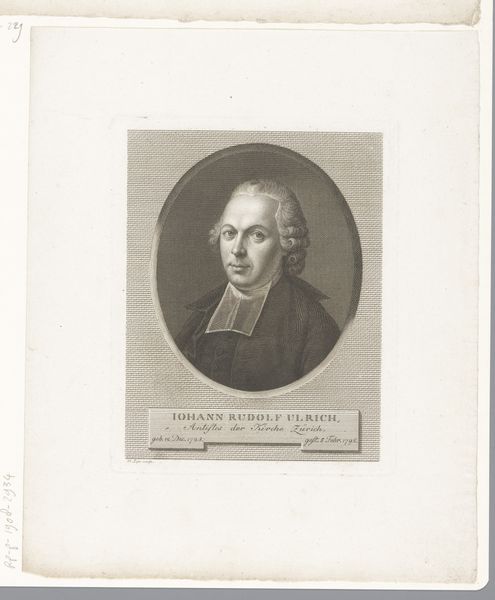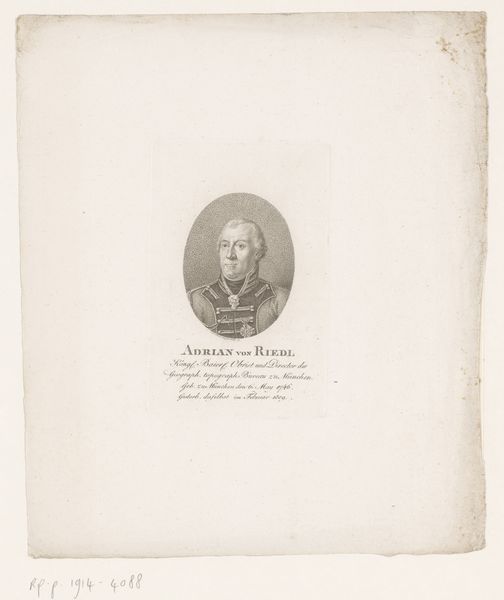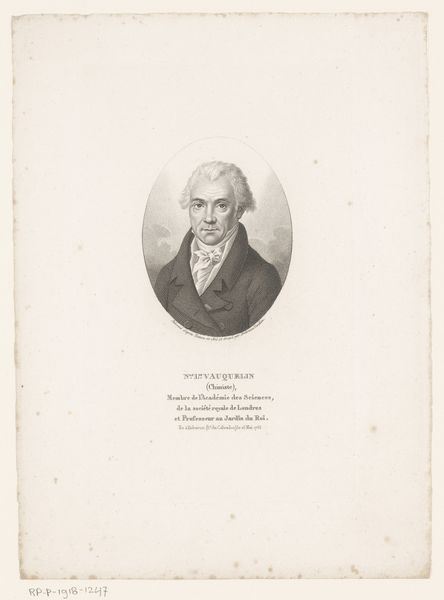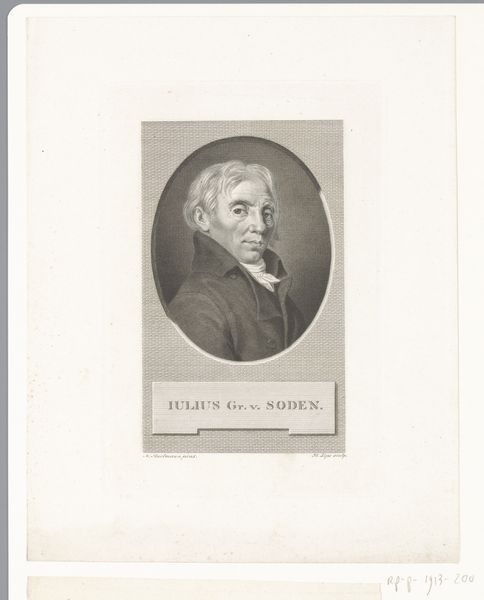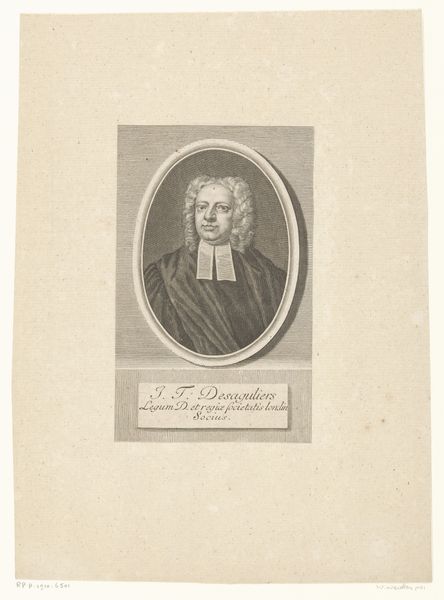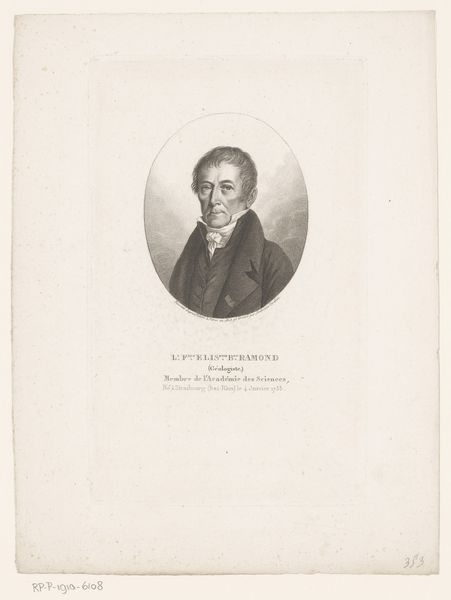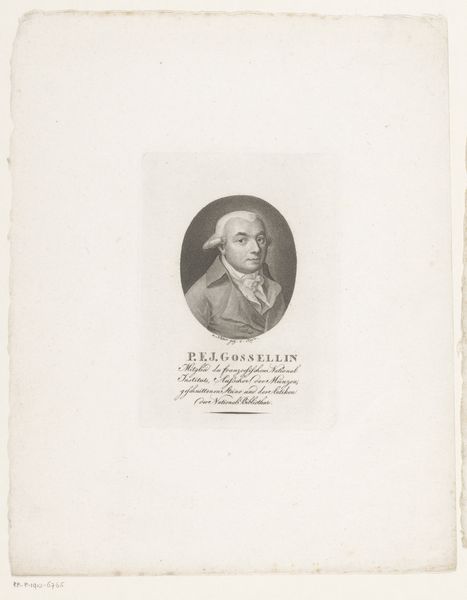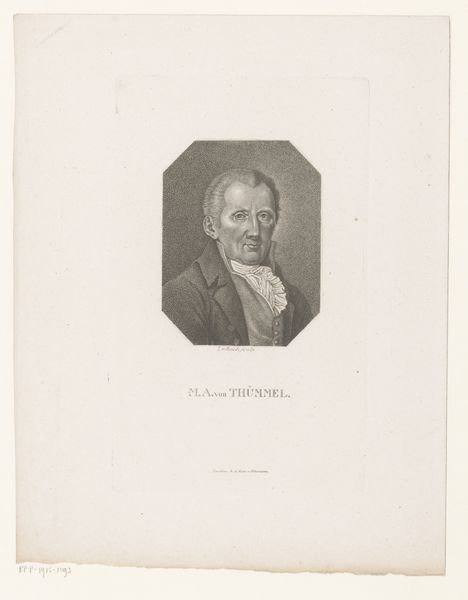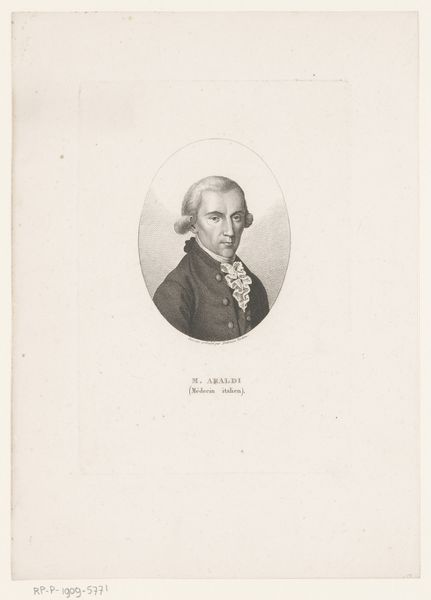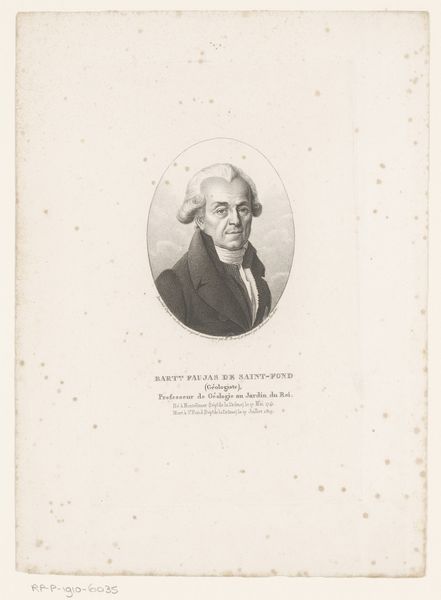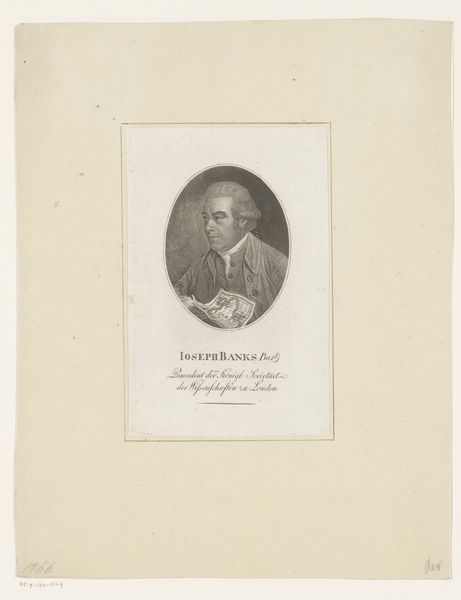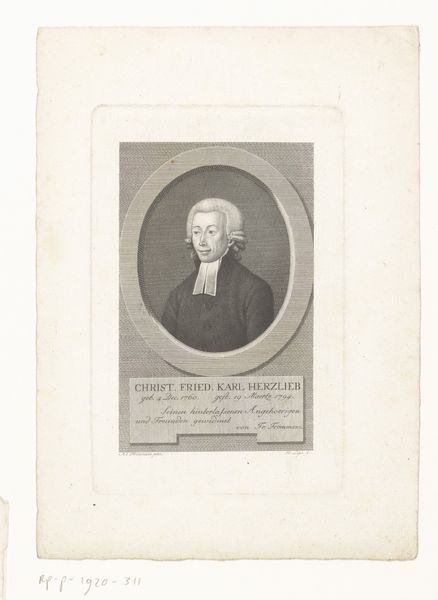
paper, engraving
#
portrait
#
neoclacissism
#
aged paper
#
paper
#
engraving
Dimensions: height 154 mm, width 96 mm
Copyright: Rijks Museum: Open Domain
Curator: This engraving, made in 1808, depicts Guillaume de Saint-Jacques de Sylvabelle. He was, as the inscription notes, the Director of the Marseille Observatory. It's a Neoclassical portrait, printed on paper. Editor: My initial reaction is… reserved. There's a formality to the portrait that speaks to the sitter’s status, of course, but it feels restrained. It's a bit austere, perhaps? Curator: I see what you mean. Think about the processes involved, though. The artist has masterfully manipulated lines on a copper plate to create shadow and form, then meticulously printed it. Consider the material realities. High quality paper. And look how it all served to commemorate this director in that specific socio-political environment. Editor: Right, portraits of administrators held significance. Public images legitimized authority and perpetuated the values of the establishment. How was it circulated? Was it only for private family collection, or did it have a wider audience? The choice of engraving suggests accessibility, a means to reproduce images and disseminate information more broadly. Curator: Absolutely. And think of the labor involved, from the paper maker to the printer to the artist's training and craftsmanship. These portraits weren't just about glorifying the individual; they reinforced social hierarchies through the materiality and mode of production. Editor: So, you are suggesting that art like this both shaped and reflected its surrounding world by acting as visual endorsement? Even as an affordable medium it reifies hierarchies and roles through its circulation in society. This shifts my focus toward the way it’s designed as much as how it’s crafted and spread. Curator: Precisely. It all speaks to how objects, materials, and even the very act of image making carry cultural and economic weight. The process by which the portrait was engraved shows its historical weight too. Editor: This image, initially simple, becomes complex. Thanks for drawing my attention toward those nuances of both making and message. Curator: Likewise. Thinking about these aspects opens up all kind of avenues to consider the role this object plays.
Comments
No comments
Be the first to comment and join the conversation on the ultimate creative platform.
